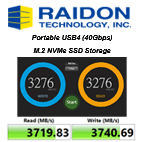Technical Paper: Impact of External Magnetic Fields on STT-MRAM
Written by 18 managers and researchers from international companies and R&D team involved in development of memories and storage solutions including STT-MRAM
This is a Press Release edited by StorageNewsletter.com on October 30, 2024 at 2:01 pmarXiv.org had published a technical paper written by 18 leaders and researchers from international companies and R&D team involved in development of memories and storage solutions including STT-MRAM.
In introduction the authors wrote: “This application note discusses the working principle of spin transfer torque magnetoresistive random access memory (STT-MRAM) and the impact that magnetic fields can have on STT-MRAM operation. Sources of magnetic field and typical magnitudes of magnetic fields are given. Based on the magnitude of commonly encountered external magnetic fields, we show below that magnetic immunity of STT-MRAM is sufficient for most uses once the chip is mounted on a printed circuit board (PCB) or inserted in its working environment. This statement is supported by the experience acquired during 60 years of use of magnetic hard disk drives (HDD) including 20 years of HDD with readers comprising magnetic tunnel junctions, 20+ years of use of magnetic field sensors as position encoders in automotive industry and 15+ years of use of MRAM. Mainly during chip handling does caution need to be exercised to avoid exposing the chip to excessively high magnetic fields.“
The full paper is available in this webpage.
The authors are: Bernard Dieny, Univ. Grenoble AIpes, CEA, CNRS, SPINTEC, 38000 Grenoble, France, Sanjeev Aggarwal, Everspin Technologies, 5670 W Chandler Blvd Suite 130, AZ 85226, USA, Vinayak Bharat Naik, Global Foundries, 400 Stone Break Rd Extension, Malta, NY 12020, USA, Sebastien Couet, Imec, 3001 Leuven, Belgium, Thomas Coughlin, Coughlin Associates, Atascadero, California, USA, Shunsuke Fukami, Laboratory for Nanoelectronics and Spintronics, Research Institute of Electrical Communication, Tohoku University, 2-1-1 Katahira, Aoba-ku, Sendai 980-8577, Japan , and Center for Science and Innovation in Spintronics, Tohoku University, 2-1-1 Katahira, Aoba-ku, Sendai 980- 8577, Japan, Kevin Garello, Univ. Grenoble AIpes, CEA, CNRS, SPINTEC, 38000 Grenoble, France, Jack Guedj, NUMEM, Sunnyvale, California, USA, Jean Anne C. Incorvia, Dept. of Electrical and Computer Engineering, The University of Texas at Austin, Austin, Texas, USA, Laurent Lebrun, Hprobe, 4 Rue Irene Joliot Curie, 38320 Eybens, France, Kyung-Jin Lee, Department of Physics, Korea Advanced Institute of Science and Technology (KAIST), Daejeon, Korea, Daniele Leonelli, Huawei Technologies R&D Belgium N. V., Leuven, Belgium, Yonghwan Noh, Netsol, Dongtan-daero 23-gil, Iwaseong-si, Gyeonggi-do, Republic of Korea, Siamak Salimy, Hprobe, 4 Rue Irene Joliot Curie, 38320 Eybens, France, Steven Soss, Global Foundries, 400 Stone Break Rd Extension, Malta, NY 12020, USA, Luc Thomas, Applied Materials, Santa Clara, CA 95054-3299 USA, Weigang Wang, Department of Physics and Department of Electrical & Computer Engineering, the University of Arizona, Tucson, AZ 85721 USA, and Daniel Worledge, IBM Almaden Research Center, San Jose, California, USA.















 Subscribe to our free daily newsletter
Subscribe to our free daily newsletter

